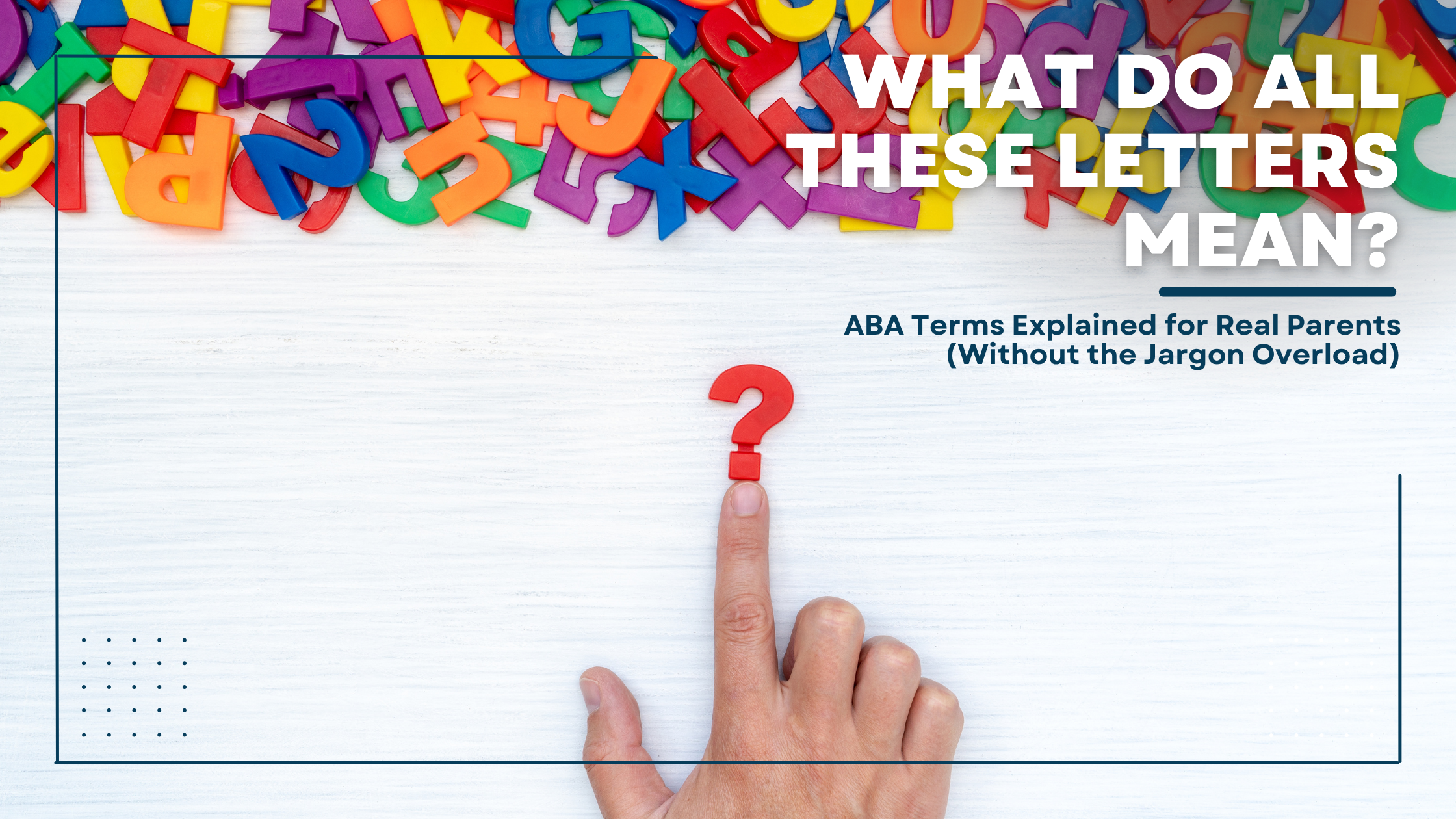What Do All These Letters Mean?
June 5, 2025

ABA Terms Explained for Real Parents (Without the Jargon Overload)
If you’re a parent of a child with autism and have just entered the world of ABA therapy, you might be feeling like you’ve stepped into a foreign language class—only no one gave you a textbook. BCBA? FBA? VB-MAPP? 🤯
Here’s the good news: you don’t need a PhD in behavior analysis to understand your child’s care plan. You just need a little clarity—and that’s where we come in.
This parent-friendly cheat sheet will walk you through the most common ABA terms so you can feel confident, empowered, and maybe even correct someone else at your next IEP meeting (politely, of course).
BCBA – Board Certified Behavior Analyst
AKA: The Therapy Architect
The BCBA is the leader of your child’s ABA team. They hold a master’s degree (or higher), are nationally certified, and are trained to assess your child’s needs, develop a customized treatment plan, and supervise the therapy process.
✅ Why it matters to you: The BCBA isn’t working with your child day-to-day, but they’re behind every meaningful change your child makes through ABA.
RBT – Registered Behavior Technician
AKA: The Hands-On Hero
RBTs are the trained and certified team members who implement the therapy plan created by the BCBA. They work directly with your child during sessions and track progress daily.
✅ Why it matters to you: Your child will likely build the closest bond with their RBT, and that relationship can have a major impact on success.
FBA – Functional Behavior Assessment
AKA: Figuring Out the “Why” Behind Behavior
An FBA helps the BCBA understand what’s triggering and maintaining certain behaviors. Whether your child is biting to avoid a task or shouting to gain attention, the FBA helps identify the root causes.
✅ Why it matters to you: Understanding why behaviors happen leads to strategies that address the cause—not just the symptoms.
BIP – Behavior Intervention Plan
AKA: The Game Plan
The BIP is a written plan that outlines how your child’s therapy team will teach new skills, prevent challenging behaviors, and respond when they occur.
✅ Why it matters to you: Consistency is key. The BIP helps everyone on the team—including parents and teachers—stay on the same page.
VB-MAPP – Verbal Behavior Milestones Assessment and Placement Program
AKA: Communication Growth Tracker
This tool measures your child’s language, social, and learning milestones and is commonly used with younger or nonverbal children.
✅ Why it matters to you: It gives the BCBA a clear picture of where your child is now and what age-appropriate goals to target next.
NET – Natural Environment Teaching
AKA: Learning Through Real Life
NET involves teaching during everyday routines and play—brushing teeth, snack time, building with blocks—not just formal table time.
✅ Why it matters to you: Kids learn best when learning feels like life, not homework.
DTT – Discrete Trial Training
AKA: Structured Skill Building
DTT breaks skills into tiny steps. Your child gets clear instructions, a chance to respond, and immediate feedback. It’s methodical and powerful.
✅ Why it matters to you: Especially early on, DTT can help teach foundational skills like eye contact, following instructions, or identifying objects.
Generalization
AKA: Using New Skills Everywhere
This is when your child takes a skill learned in therapy—like asking for help—and uses it naturally at home, school, or Grandma’s house.
✅ Why it matters to you: Therapy success doesn’t mean much unless it works in real life. Generalization is the goal.
Parent Training
AKA: Your Superpower
Parent training sessions are designed to teach you the strategies that work, so you can reinforce learning and handle challenges confidently at home.
✅ Why it matters to you: Research shows that when parents are involved, kids make faster, more lasting progress.
Final Thoughts: You Don’t Have to Know It All
Learning the language of ABA takes time. Don’t worry if you forget an acronym (or three)—that’s what your team is here for. The most important thing? You’re asking questions, staying involved, and advocating for your child’s success.
